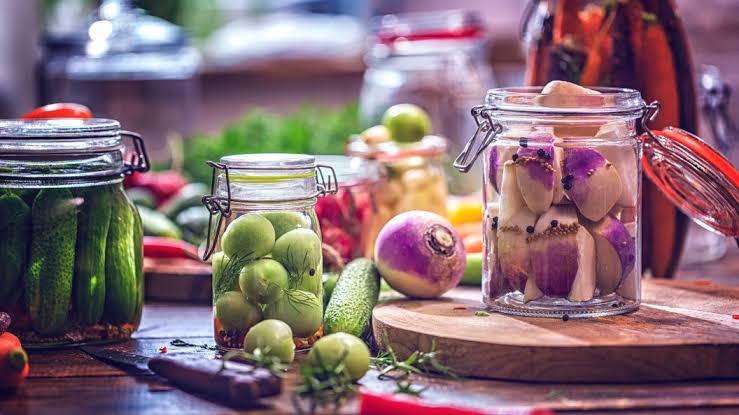Say goodbye to daily trips to the market for foodstuffs.
Stockpiling food without a refrigerator is tricky. But so is the flactuation of food prices and unstable electricity supply. One moment the prices are down and you can buy a lot of food to last a while. Without refrigeration, you miss out.
On the otherside, you are forced to eat everything very fast or give it away to avoid rotting.
Here are four recipes for food preservation to save you money and make food last longer.
1. Salting
Salt creates a hostile environment for bacteria and other micro-organisms because they cannot tolerate it in high quantities. It dates back to hundreds of years of preserving meat and is environmentally friendly and healthy.
- Rub a mixture of salt and sugar thoroughly into the meat (fresh pork, or other types of meat, vegetables).
- Pack it well inside a container/crock.
- Keep it in a stable and cool place.
- For vegetables and fruit (especially those cut in half), simply coat the food with salt.
Brining
This is similar to salting, but rather than using normal salt only, a salty brine solution is added.This solution must be changed regularly.
Salted meat reguires soaking in water for a LONG time to get rid of excess salt to make it edible.
2. Canning
This method involves partially cooking food to kill bacteria and then sealing it inside a can until it is ready to be prepared.
- Prepare the food
- Additives include sugar syrup or brine.
- Sterilise the glass jars and lids
- Fill the cans and wipe them dry.
- Store in a cool dry place.
Canning is tasking the first time you do it. However all it’s costs are upfront especially the purchase of cans. In the long run, it becomes easier to do the whole process and you become skilled.
The bonus, the cans are unbelievably durable and all you need to replace are the lids, once in a while.
3. Drying
This is the simplest method and requires little effort. It removes all water, since bacteria thrive in moist environments, for long-lasting storage.
Relying on the sun or using low-temperature oven takes a lot of time and can be power consuming.
Some people buy a food dehydrator to make the process easier.
Dried food is edible after soaking it in water for hours to rehydrate it.
Dried fruit and some food can be used to make delicious snacks.
4. Fermenting
This method is similar to canning but does not involve sealing the foo up. It instead allows entry of ‘good’ bacteria.
To achieve this, use acidic brinea (highly concentrated water solution of common salt, sodium chloride) which controls the fermentation process.
The brine kills off potentially harmful becteria or mold and allows a few anaerobic bacteria.
It also reduce food to smaller units while deepening the flavours.



